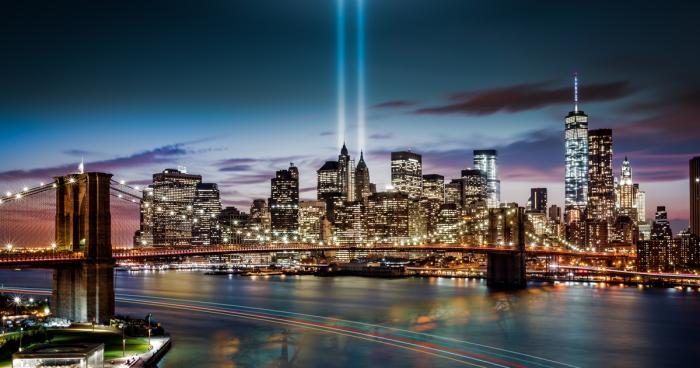Promoting greater economic protection against man-made catastrophes: 20 years of lessons from 9/11

By Rachel Anne Carter
Twenty years today, the world watched in shock as tragedy unfolded – as events that were previously unfathomable during peacetime, generated by human actors, occurred. Nearly 3,000 people lost their lives and 6,000 were injured, many severely, in the 9/11 terrorist attacks. In fact, the death toll continues to rise today, with almost 20,000 civilians or first responders diagnosed with a 9/11-related cancer, according to the World Trade Centre Health Program.
In addition to the human tragedy, there was devastating economic impact. In the first three months after 9/11, New York City lost USD 2.8 billion in wages and business revenue, according to the New York Times. There were also losses in real estate and stock valuations. The airline industry was hit hard, as many people feared flying. Cleaning up Lower Manhattan alone cost more than USD 750 million.
According to the Congressional Research Service (CRS) Report for Congress, total insured losses related to 9/11 amounted to approximately USD 40 billion, compared to economic losses of USD 1 trillion.[1] Total insured property losses arising from 9/11 exceeded USD 27 billion: the costliest terrorism loss ever. In additional to property, the insurance lines of business most effected were terrorism insurance, aviation insurance and work cover insurance.
Back then the insurance industry did not have the skills or experience to model the behavior of terrorist groups into to project probable future terrorist losses. Uncertainty surrounding human factors makes it difficult to attribute deterministic or probabilistic estimates for future terrorist events. As a result, many insurance markets became unwilling and unable to cover terrorism risk and withdrew insurance cover. However, a number of models have been developed since to help the industry assess terrorism risk and inform product development and underwriting.
The insurance protection gap in the commercial arena brought serious financial hardship to businesses and resulted in widespread business closures. Governments around the world quickly reacted. Terrorism pools were established in Australia, Austria, Belgium, France, Germany, India, Netherlands, Russia, South Africa and the U.S., and existing terrorism pools in the U.K. and Spain were recalibrated. The majority of them continue to operate, with coverage expanded to incorporate (in many cases) nuclear, biological, radiological and chemical terrorist acts. Some pools also cover cyber terrorism. In addition to the pools, the commercial insurance market provides coverage for a number of terrorist events.
Twenty years after 9/11, we are more aware of the possibility of catastrophic terrorist events and other man-made catastrophes. We also know that this threat extends beyond the physical realm now and into the cyber one. If we can take one insurance lesson from 9/11, it is that we must be proactive in discussing how to manage possible future losses arising from large-scale catastrophic risks. This is particularly relevant for the known risks society faces today, such as climate change, pandemics and cyber.
The 20-year anniversary of 9/11 also reminds us of the insurance industry’s great power to pool its financial and intellectual capacities to anticipate and protect against cataclysmic events. It must relentlessly continue to do this.
[1] https://digital.library.unt.edu/ark:/67531/metacrs7725/m1/1/high_res_d/R...





